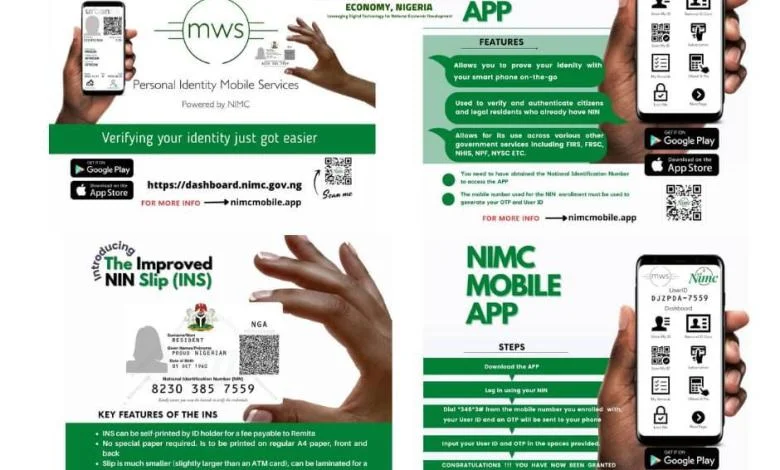Cuba has extended the validity of its physical tourist cards until December 31, 2025, giving travelers more time to adjust to its new digital visa system. The government made this decision to ease the global transition toward its electronic visa (e-Visa) platform, which officially launched in July 2024.
While the new e-Visa system represents the future of travel authorization into the Caribbean nation, authorities say the extension will allow holders of existing Tarjeta del Turista—Cuba’s traditional paper tourist card—to continue entering the country without disruption. The previous expiration date of June 30, 2025, has now been extended by another six months.
This latest update, issued by Cuba’s Ministry of Tourism, underscores the government’s commitment to a seamless migration to a digital system, offering flexibility for visitors and encouraging broader adoption of its tech-driven reforms.
Existing Tourist Cards Remain Valid Through 2025
The Ministry clarified that no new paper tourist cards will be issued moving forward. However, travelers who already possess valid physical cards can continue to use them to gain entry into the country until the end of December 2025. The decision was announced to reduce disruption for travelers who had already made arrangements based on the older system and might require more time to adapt to the new digital format.
Tourist cards issued before the July 2024 launch of the e-Visa remain eligible for a single entry and allow a stay of up to 90 days, with an option for extension once inside Cuba.
By choosing a phased transition, Cuban authorities aim to prevent any backlog or confusion that could arise from a swift, mandatory switch to digital-only access.
What to Know About Cuba’s New e-Visa
Cuba’s e-Visa, introduced as part of broader immigration reforms, is a digital travel permit designed to replace the traditional paper-based tourist cards. It simplifies the visa process for tourists and aligns with international trends that prioritize efficiency, security, and paperless systems.
The new e-Visa system enables applicants to apply remotely through Cuban consulates and embassies, reducing the reliance on travel agencies or intermediary services.
The cost of the e-Visa varies slightly by region:
-
€22 in most countries
-
$50 USD for travelers applying from the United States
However, unlike many digital visa platforms, Cuba still requires payment via offline methods such as cash, cheque, or bank transfer—due largely to banking restrictions and ongoing international sanctions. Therefore, applicants must complete transactions directly through the Cuban embassy or consulate in their respective countries.
Application Timeline and Conditions
Processing of the e-Visa generally takes a few working days, though wait times may vary depending on the country of application. Once approved, the e-Visa remains valid for a single entry, with a stay duration of up to 90 days, extendable after arrival.
The digital system is intended to streamline both the application and verification process, providing immigration officers with real-time access to traveler data while reducing paperwork and risk of forgery.
Mandatory D’Viajeros Platform Enhances Pre-Arrival Screening
As part of its broader entry management overhaul, Cuba also now requires all incoming travelers to complete the D’Viajeros digital form prior to arrival. This online registration platform collects critical pre-arrival data related to:
-
Health information
-
Customs declarations
-
Immigration details
Travelers must submit this information within seven days before arriving in Cuba. Upon completion, the platform generates a QR code that must be presented at immigration checkpoints upon entry.
Failure to complete the D’Viajeros process could result in significant arrival delays or even denial of entry, according to the Ministry of Tourism.
By making this platform compulsory, Cuba aims to enhance health and border security, improve data accuracy, and speed up clearance procedures—particularly at busy ports of entry like José Martí International Airport in Havana.
A Phased Approach to Modernization
Cuba’s dual-pronged strategy—maintaining the usability of older tourist cards while rolling out a modernized visa process—signals a clear intent to ensure minimal disruption for travelers.
The nation has seen a gradual rebound in tourism following the pandemic years. As it works to attract more international visitors and improve its global image as a travel destination, Cuban officials are balancing technological advancement with accessibility.
The Ministry emphasized that these reforms are part of a broader government push to digitize public services, streamline entry processes, and offer a more user-friendly experience to travelers.
Officials stated that the extension of physical card validity provides a cushion period for travelers unfamiliar with the e-Visa platform or those who have already secured their travel documents using the older format.
Travel Industry Reaction and Implications
Tour operators and travel agencies have largely welcomed the decision. Many had raised concerns earlier this year that an abrupt end to the paper tourist card system would confuse travelers and potentially disrupt bookings made months in advance.
Agencies specializing in Cuban tourism say the extended validity gives them more time to educate clients about the new process, prepare documentation, and ensure compliance with the D’Viajeros mandate.
Similarly, international airports and carriers servicing Cuba now have a longer runway to integrate the new e-Visa system into their pre-boarding checks and passenger handling procedures.
Wider Context: Why the Transition Matters
Cuba’s shift to a digital visa system follows a growing global trend among countries seeking to modernize travel infrastructure and improve data collection at borders.
Nations across Latin America, Africa, and Southeast Asia have rolled out similar platforms in the past five years, citing the need for:
-
Faster passenger processing
-
Improved health and customs monitoring
-
Streamlined immigration management
-
Reduced reliance on paper documents prone to tampering
For Cuba, which continues to face both geopolitical and economic challenges, digital reform also represents a strategic investment in tourism infrastructure—a key pillar of the national economy.
In 2023 alone, tourism contributed over 10% to Cuba’s GDP, and the government has pledged to restore pre-pandemic visitor levels by 2026.
The digital visa reform, along with updated arrival protocols like D’Viajeros, positions the country as a more accessible and tech-savvy destination, particularly for European and North American tourists.
What Travelers Should Do Now
If you already hold a physical tourist card issued before July 2024, you may still travel to Cuba through December 31, 2025, without needing to switch to the e-Visa. However, you must still complete the D’Viajeros form online before your trip.
If you plan to travel in 2026 or later—or if you do not currently hold a tourist card—you will need to apply for an e-Visa via a Cuban consulate, and ensure payment is made through approved offline channels.
Finally, travelers are encouraged to start their visa application early, especially given the manual nature of the payment and processing systems still in place.
Conclusion
Cuba’s extension of the physical tourist card’s validity offers travelers welcome flexibility amid the rollout of a transformative new visa system. With continued focus on digital modernization, simplified entry processes, and global alignment, Cuba is taking clear steps to improve its standing as a top-tier travel destination—while remaining mindful of the needs of current visitors.
As the December 2025 deadline approaches, travelers, tour operators, and foreign missions will play a key role in facilitating this historic shift toward a digital-first future for Cuban tourism.











